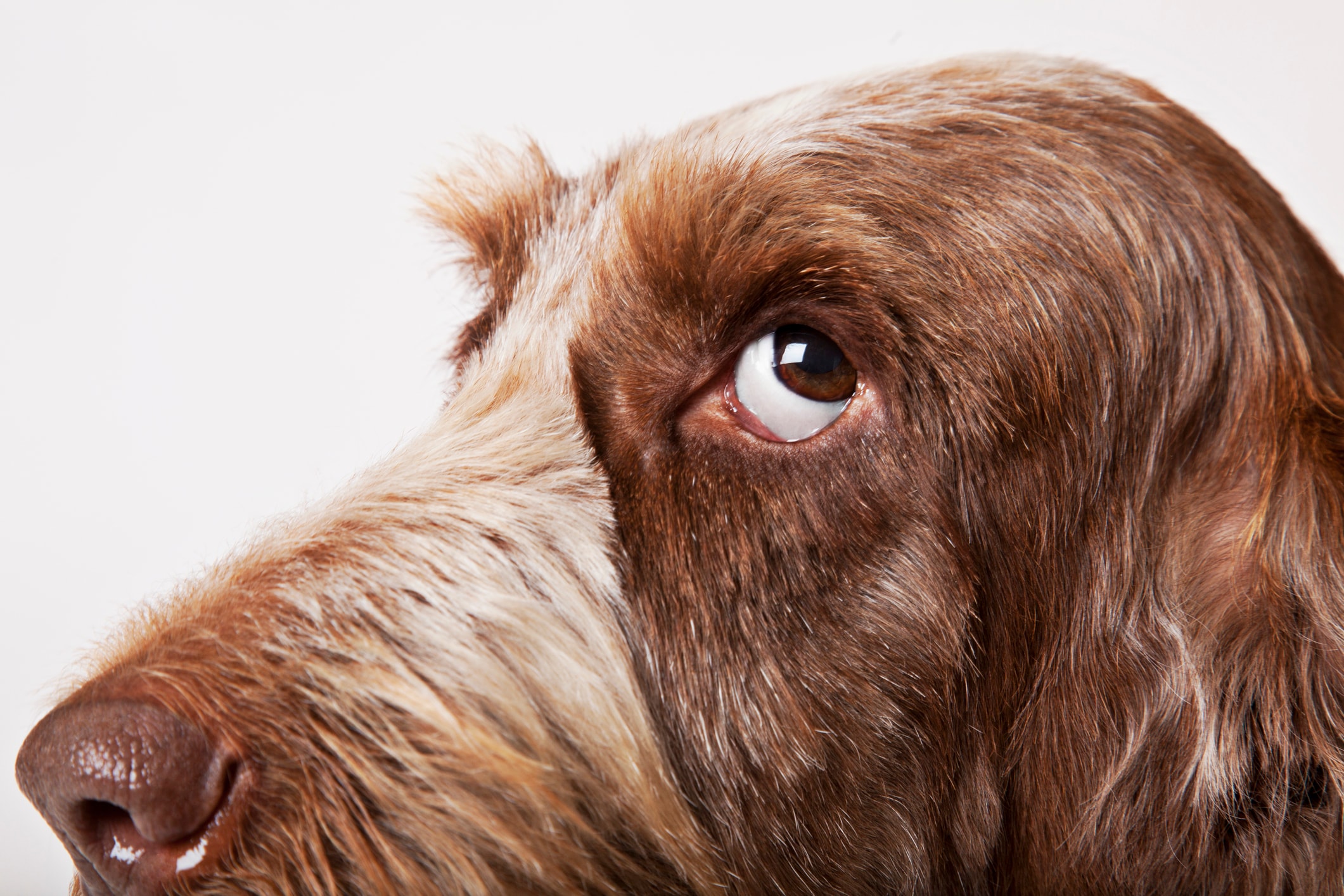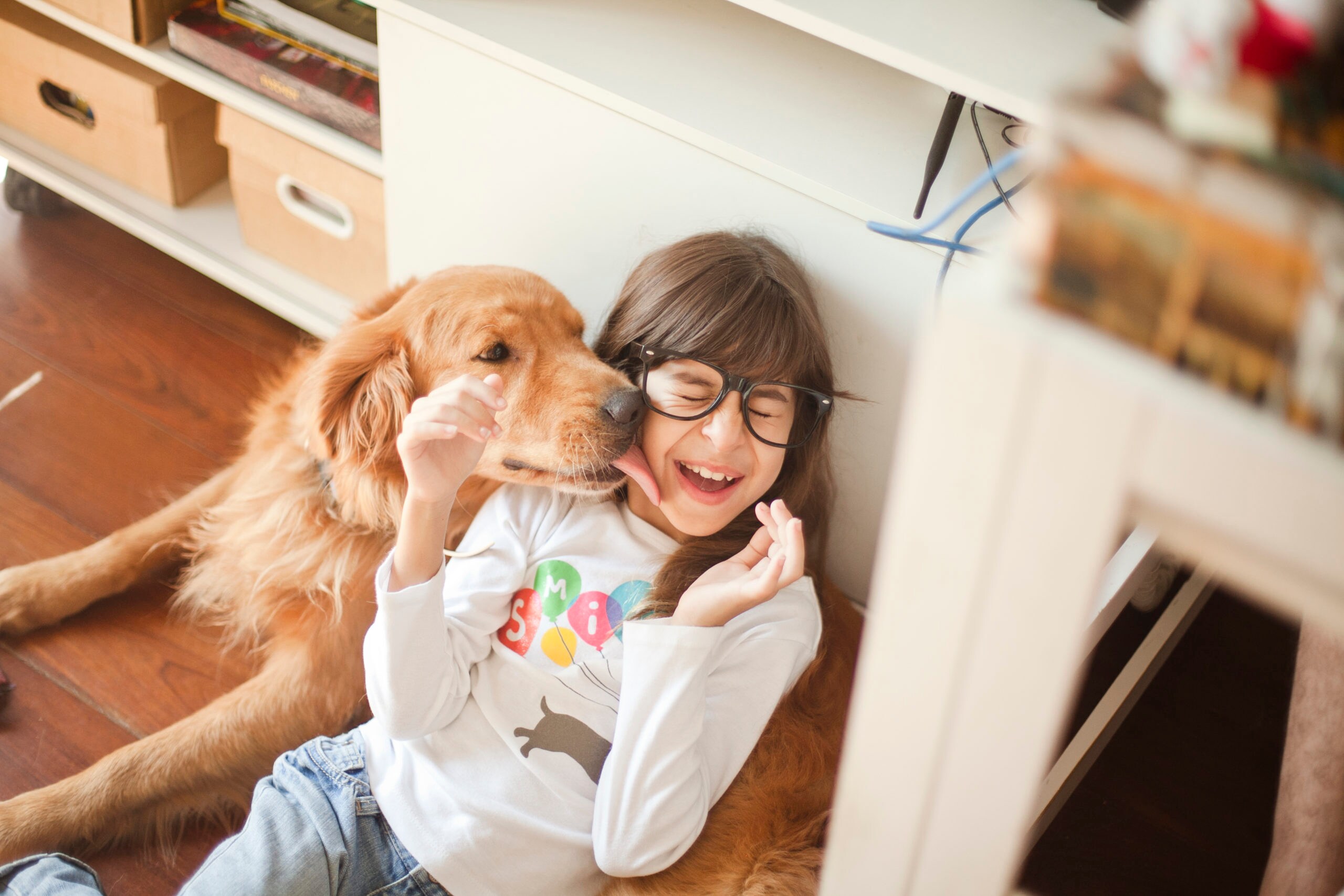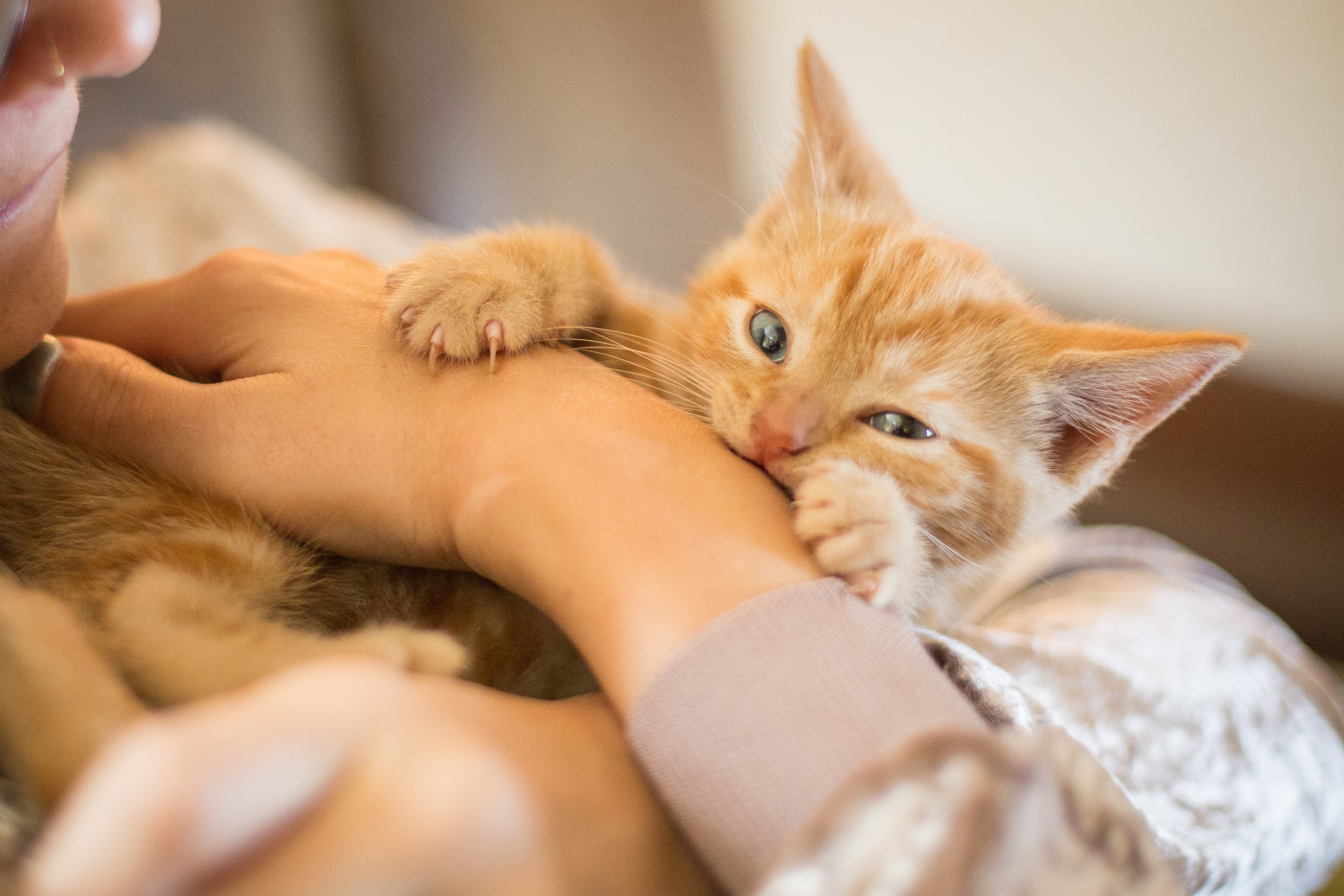When you and your dog play outside, it’s easy for dirt and contaminants to get into your pet’s eyes. If your pup has been pawing at her eye in pain or discomfort, she might have a dog eye infection. But how can you tell, and what should you do?
If your pet has any signs of eye irritation, you should head to the vet to get it checked out. Something that seems minor could be a lot more serious than it appears.
“The take-home message: Any eye condition that has persisted for more than 48 hours or is causing a dog discomfort should be seen by a veterinarian immediately,” says veterinarian Dr. Ellen Fitzgibbon of VCA Old Marple Animal Hospital in Springfield, Pennsylvania. “When caught early, most are treatable, but untreated eye conditions can result in loss of vision.”
Here are four common dog eye problems to be aware of:
- Corneal Ulcer
This is one of the most common dog eye conditions and is caused by a scratch or poke (often by the dog or a cat), hairs rubbing the eye and other irritations of the cornea. That can lead to the growth of small ulcers on the surface. “Sometimes dogs can get really itchy eyes and are rubbing them a lot,” says Dr. Jessica Moreira, a vet with Westfield Veterinary Group & Wellness Center in Westfield, New Jersey.“There’s an infection there. It can cause significant damage to the surface, almost like getting a paper cut,” she adds. Dogs with more prominent, “bulging” eyes, like pugs, bulldogs and Shih Tzus, are more prone because they have less protection around their eyes. Symptoms are irritation, redness, squinting and severe pain, according to Dr. Fitzgibbon, as well as a possible white spot on the cornea.
The condition is diagnosed by applying a stain to the eye, which highlights the ulcer. Topical antibiotics, painkillers and the ecollar are usually all that’s required treatment-wise, but referral to a pet ophthalmologist and surgery might be necessary for deeper ulcerations.
- Conjunctivitis
Known as “pink eye” to you, the doggie version isn’t nearly as contagious and doesn’t always spread to the other eye, says Dr. Fitzgibbon. Signs are red, irritated eyes the pet rubs a lot, squinting and a green or yellow discharge. The underlying cause is usually a bacterial infection, a virus or allergies.Treatment is typically a topical antibiotic ointment or drops, though sometimes a steroid is also prescribed to stop inflammation. “Often we use an ecollar (a cone around the head) to prevent them from scratching or rubbing the eye and causing further damage,” explains Dr. Fitzgibbon.
- Dry Eye
Though not exactly a dog eye infection, many pooches suffer from dry eye, which happens when there’s not enough tear production. The surface of the eye, or cornea, is often visibly dry and looks dull, with a mucousy discharge.“If the condition persists without treatment, an ulcer can form on the surface of the eye, which is very painful and serious,” says Dr. Fitzgibbon. It could affect vision. It’s typically caused by another autoimmune condition and is treated (for life in most cases) with an immunosuppressive drug as well as a topical antibiotic.
- Glaucoma
Glaucoma is a rise in the pressure within the eye, and though it’s not an infection, it’s common among dogs. Some of the early signs mimic those of the other ailments. “Glaucoma can be very serious and lead to blindness,” says Dr. Fitzgibbon.It often happens because the dog has other health issues, according to Dr. Moreira — tumors in the eye or diabetes, for example. “We see glaucoma a lot,” she says. Signs are severe pain and very red, cloudy eyes, and treatment is often hospitalization and medication, though it depends on the underlying cause.
Don’t try using over-the-counter medications for your dog’s eye problems, cautions Dr. Moreira. “Just looking at the eye itself, you can’t determine what’s wrong,” she says. “A lot of these things look pretty similar, which is why we recommend bringing the pet in.”
Make sure your dog walker knows the normal habits and disposition of your pet so it’s easy to spot something unusual, Dr. Moreira advises. As always, have you dog’s medication, with instructions, and vet’s phone number readily available for your walker.
For more on dog health, check out Let’s Talk About Dog Diarrhea.
Catherine Donaldson-Evans is a freelance journalist whose work has appeared in numerous publications. When she isn’t writing and editing, she’s chasing after a husband, a big toddler and a smaller toddler, not necessarily in that order.
* This article is for general informational purposes only. It is not intended nor implied to be providing medical advice and is not a substitute for such advice. The reader should always consult a health care provider concerning any medical condition or treatment plan. Neither Care.com nor the author assumes any responsibility or liability with respect to use of any information contained herein.





